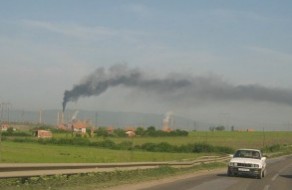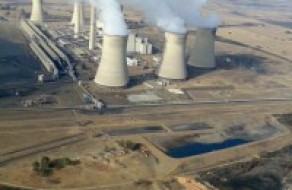This post is also available in: Spanish

Photo © Joe Athialy
Climate change is a fundamental threat to development and the fight against poverty. Without bold action now, the warming planet threatens to put prosperity out of reach of millions and roll back decades of development. No country — rich or poor — is immune from the impacts of climate-related disasters today.
The World Bank’s current safeguard policies do not adequately address the challenges a changing climate presents to communities, local ecosystems and the global commons. At present, the Bank lags behind other financial institutions that have gone further to integrate climate-related issues into their environmental and social policies. While the new Environmental and Social Framework approved in August 2016 begins to grapple with the myriad challenges of climate change, it falls short of incorporating best practices in critical areas, and fails to capture important opportunities to promote low-carbon, climate resilient development. BIC and our civil society colleagues are working towards identifying gaps and advocating measures to promote sustainable, climate sensitive development.
World Bank Climate Policy Issues:
- 75% of the WB projects do not incorporate assessments relating to climate change risks into their design;
- 88% of the projects do not assess GHG emissions from the project activities, relative to a baseline;
- Only a few projects illustrate how WB investments can help countries adapt to climate change and build resilience;
- Less than half of the WB projects demonstrate to be strategically embedded in long-term sustainable development plans;
Source: WRI
World Bank Policy vs. Other International Banks:
- World Bank: Mentions stranded assets due to carbon pricing but does not exclude exploration; Activities in energy sector include oil, gas, and coal development and production; IFC investments across the entire gas exploration, production, and downstream supply chain.
- European Bank for Reconstruction and Development: Will support exploration and production of oil and gas
- European Investment Bank: Will finance the extraction of hydrocarbons if opportunities arise; considering unconventional hydrocarbons (although likely not exploration)
- Asian Development Bank: Will not finance coal and oil exploration but has not excluded natural gas
- African Development Bank: Considering whether to support shale gas development – would likely include exploration

World Bank Climate Energy Investment Portfolio (Source: Oil Change International)
World Bank Exploration Projects:
- $1 billion of WBG financing out of the $2.6 billion fossil fuel financing in FY2013 had an exploration component
- Over $3 billion in WBG financing for projects with exploration components since 2008; $2.3 billion from IFC
- Nearly $4.5 billion in financing for projects that include exploration at major MDBs since 2008
BIC is working with the local partners in either stopping coal projects or strengthening the environmental and social mitigation plans on coal projects supported by the World Bank Group:
Kosovo Coal Plant
The energy sector in Kosovo is currently powered by some of the highest polluting lignite power generation in Europe, and it is plagued by an old and inefficient grid, with high technical and commercial losses.
Tata Mundra Coal Power Plant
Tata Mundra is a 4.6 GW ultra mega coal power plant at the port city of Mundra in the state of Gujarat, India. Financed in part by the World Bank’s private sector arm, the IFC, the thermal plant consumes imported coal from Indonesia and uses supercritical technology.
Read More >>
Oyu Tolgoi Copper Mine
The Oyu Tolgoi (OT) copper mining complex, located in Mongolia’s South Gobi and led
by Rio Tinto, sits atop one of the largest undeveloped copper deposits in the world. Some expect it to increase Mongolia’s GDP by 30%.
Read More >>
Medupi Coal Plant
At $3.75 billion, the loan to South Africa’s energy parastatal Eskom is the World Bank’s largest loan ever. The lion’s share supports construction of the world’s fourth largest coal-fired power plant, Medupi, which will
emit 25 million tons of CO2 per year.
World Bank Group Climate Strategy
The World Bank has played a significant role in the United Nations negotiations to reach a global deal on climate change. Since 2008, the World Bank has managed multi-billion dollar climate change trust funds for the UN. In December 2010, governments signed the Cancun Agreement and created a Green Climate Fund to finance the global response to climate change. Governments selected the World Bank to manage the trust fund. In the coming years, the Bank will play a leading role in directing finance to climate change efforts, and in setting the precedents for future financing. At the same time, the World Bank has not committed to reduce its own climate change footprint. The Bank does not measure how its investments contribute to greenhouse gas emissions, and has not committed to reduce the overall climate footprint of its lending portfolio. Instead, the portfolio of fossil fuel-related projects has grown.
Turn Down the Heat, a snapshot of the latest climate science prepared for the Word Bank by the Potsdam Institute for Climate Impact Research, says we are on a path to a 4°C (7.2°F) warmer world by the end of this century. The report provides a clear picture of the devastating impacts on agriculture, water resources, ecosystems, and human health. While every region will be affected, those least able to adapt — the poor and most vulnerable — would be hit hardest. A follow-up report, which focused on impacts of climate change on Sub-Saharan Africa, South Asia, and South East Asia, tells us that if the world warms by 2°C (3.6°F) — warming which may be reached in 20 to 30 years — there will be widespread food shortages, unprecedented heat-waves, and more intense storms.
The World Bank Group says that a 4°C warmer world can and must be avoided. They further state that immediate global action is needed to slow the growth in greenhouse gas emissions this decade and help countries prepare for a 2°C warmer world and adapt to changes that are already locked in.
Yet, the World Bank’s performance is far from what it should be in stopping global warming. A recent World Resources Institute study shows that the Bank does not assess climate implications/effects in 75% of its projects, and that 88% of its projects do not assess GHG emissions. Shift the Subsidies shows that the World Bank continues spending almost half of its energy lending portfolio in projects that hurt the climate and contribute to global warming.
The World Bank Group is focusing on five key areas:
- Building low-carbon, climate resilient cities, particularly through assistance with low-carbon planning, energy-efficiency assessments, and securing finance, targets the fast-growing metropolitan areas that are connected to 70 percent of global emissions.
- Moving forward on climate-smart agriculture improves yields to feed a growing global population, reduces emissions, and adds carbon storage.
- Accelerating energy efficiency and investment in renewable energy helps shifts the world away from high-carbon fossil fuels.
- Developing carbon pricing helps to get prices right for emissions.
- The Bank Group is also supporting work on ending fossil fuel subsidies.
Another important move that can make a difference quickly: reducing short-lived climate pollutants (SLCPs), such as soot from fires and diesel vehicles and methane from landfills and extractive industries, can reap added rewards of reducing the impact on snow and glaciers and lowering the costs to human health and crops.
The World Bank Group Climate Vice Presidency, established in January 2014, is working to leverage both public and private sources of climate finance, to support climate-smart policy and investments, and to help countries and businesses adapt to a changing climate.
Climate Action at the World Bank Group
The World Bank Group has successfully demonstrated innovative ways to mobilize additional resources to finance climate action by working with partners. That includes the $8 billion Climate Investment Funds, which are designed to provide scaled-up financing, through the Multilateral Development Banks, to initiate transformational change toward climate-resilient, low-carbon development.
The Bank is trustee of 15 carbon finance initiatives that have supported more than 145 active projects in 70 client countries. Since 2000, these initiatives have reduced the equivalent of 187 million tons of carbon dioxide emissions through the projects they support.
The International Finance Corporation (IFC), the Bank’s private sector arm, works to support renewable power, energy efficiency and other climate-smart solutions for developing countries. IFC has invested more than $11 billion in climate-related projects since 2005, including $2.5 billion during FY 2013.
The World Bank Treasury and IFC are also the world’s largest issuers of green bonds, which support climate-related projects such as increasing energy efficiency and developing of renewable energy — with over $6 billion issued by the World Bank Treasury in 17 currencies, and $3.4 billion by the IFC, including two $1 billion benchmark offerings in 2013.
Through the Global Facility for Disaster Reduction and Recovery (GFDRR), the Bank is helping developing countries reduce their vulnerability to natural hazards and adapt to climate change by mainstreaming disaster risk reduction and climate change adaptation in country development strategies.
The 2013 report Building Resilience: Integrating Climate and Disaster Risk into Development, noting that weather-related losses and damage have risen from an annual average of about $50 billion in the 1980s to close to $200 billion over the last decade, emphasized the need to better integrate climate adaption with disaster-risk management programs.
Knowledge portals, including the Climate Change Knowledge Portal, the Climate Finance Options Platform, and the Platform for Climate Smart Planning, along with training through the World Bank Institute, provide countries with cutting-edge information, analysis, and tools on climate change.
To tackle SLCPs, the Bank launched a review of its own portfolio to identify ways to do more through its projects to reduce the emission of these pollutants. The report, Integration of Short-Lived Climate Pollutants in World Bank Activities, found that 7.7 percent of World Bank commitments, or approximately $18 billion, went into “SLCP-relevant” activities between 2007 and 2012.
World Bank Group Climate Scorecard 2014
In October 2013, the World Bank Group adopted a new Strategy which outlines how the World Bank Group will partner with clients to help them achieve the two ambitious goals of; (i) ending extreme poverty by reducing the percentage of people living on less than $1.25 a day to 3 percent by 2030; and (ii) promoting shared prosperity by fostering income growth for the bottom 40 percent of the population in every country. The World Bank Group Corporate Scorecard is designed to provide a high-level and strategic overview of the World Bank Group’s performance towards achieving these two goals. It has been revised to ensure its alignment with the new World Bank Group Strategy and for the first time covers issues of climate change.




